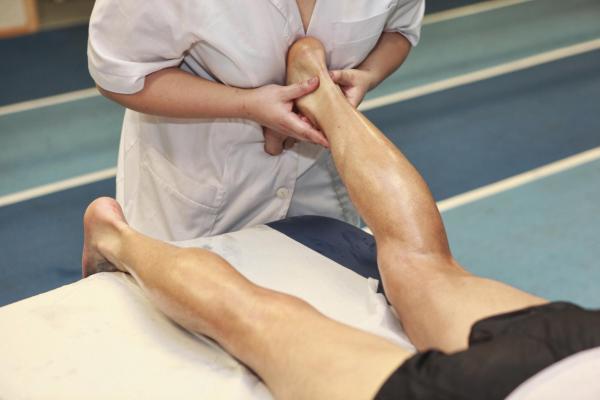Guillain-Barre Syndrome
 Guillain-Barre syndrome is an acute inflammatory autoimmune reaction, manifested by autonomic disorders, sensitivity disorders and flaccid paresis. This syndrome is classified as very serious and serious diseases, as in every third case, patients need artificial ventilation and a full complex of intensive care. Usually this disease develops after a previous intestinal infection, or upper respiratory tract infection. Guillain-Barre syndrome is common throughout the world and occurs in all age groups of the population, but according to observations, the average age when this syndrome may occur is about forty years. According to statistical data, this disease is more common in male patients. Frequency of incidence: 1-2 persons per 100,000 population. As a rule, this disease occurs irregularly, however, over the past seventy years, several outbreaks have been recorded, in which Guillain-Barre syndrome developed over hundreds of people in different parts of the globe almost overnight. At present, the number of patients with this syndrome is growing in Europe and the US, which is most likely due to the improvement of diagnostics, which currently allows detecting the presence of this disease at the earliest stages of
Guillain-Barre syndrome is an acute inflammatory autoimmune reaction, manifested by autonomic disorders, sensitivity disorders and flaccid paresis. This syndrome is classified as very serious and serious diseases, as in every third case, patients need artificial ventilation and a full complex of intensive care. Usually this disease develops after a previous intestinal infection, or upper respiratory tract infection. Guillain-Barre syndrome is common throughout the world and occurs in all age groups of the population, but according to observations, the average age when this syndrome may occur is about forty years. According to statistical data, this disease is more common in male patients. Frequency of incidence: 1-2 persons per 100,000 population. As a rule, this disease occurs irregularly, however, over the past seventy years, several outbreaks have been recorded, in which Guillain-Barre syndrome developed over hundreds of people in different parts of the globe almost overnight. At present, the number of patients with this syndrome is growing in Europe and the US, which is most likely due to the improvement of diagnostics, which currently allows detecting the presence of this disease at the earliest stages of
. Symptoms and signs of Guillain-Barre syndrome
After a short period of malaiseWith the symptoms of ARI, numbness in the hands and feet, there are paresthesia( feeling creepy creepy).Then, one to two days later, muscle weakness in the legs and hands is added;A person loses the ability to self-service and gradually becomes completely immobilized. Quite often there is a violation of eye movements, hoarseness of voice, tumbling. In this case, the patients see and hear everything and are in full consciousness. Gradually the contractility of the diaphragm and intercostal muscles begins to decrease, the volume of respiratory movements decreases, and the vital capacity of the lungs decreases. As a consequence, blood is not enriched enough in the lungs with oxygen, oxygen starvation develops( due to respiratory insufficiency, the development of a lethal outcome is possible).Patients with this syndrome are treated in the intensive care unit. Due to respiratory failure at any time, there may be a need for artificial ventilation of the lungs
Treatment of Guillain-Barre syndrome
It is advisable to begin treatment of Guillain-Barre syndrome without delay, already in the first hours after the onset of the disease. If weakness, pain in the limbs and paralysis occurs, you should immediately seek medical help. In the absence of timely adequate treatment, paralysis can spread to the respiratory system, which can pose a real threat to life. The main method of treatment of this syndrome is stage plasmapheresis. Plasmapheresis - withdrawal from the patient's blood and subsequent separation from the plasma of the elemental elements by centrifugation. Then the plasma is removed, and the shaped elements are to be returned back to the bloodstream. Instead of plasma, the patient is poured electrolyte solutions and albumin solution. From the patient's body, along with the plasma, various antibodies and other molecular factors affecting the myelin sheath of the nerves are removed. Thanks to plasmapheresis, the development of autoimmune inflammation breaks off, and the patient's condition is stabilized. Soon after the stabilization of the general condition, the recovery period begins.
The prospects for full recovery are the majority of patients with Guillain-Barre syndrome. During the recovery period, it is very important to conduct physical therapy exercises, electrostimulation of the pharyngeal muscles( in the presence of swallowing disorders), physiotherapy( massage).
When conducting timely adequate treatment, the prognosis of further life is quite favorable. After recovery, the patients begin to live anew a full life, although there are cases when for the rest of their lives there may be a slight weakness in the legs and hands.
More Articles on this topic:
1. Horner's Syndrome 2. Tourette's Syndrome



